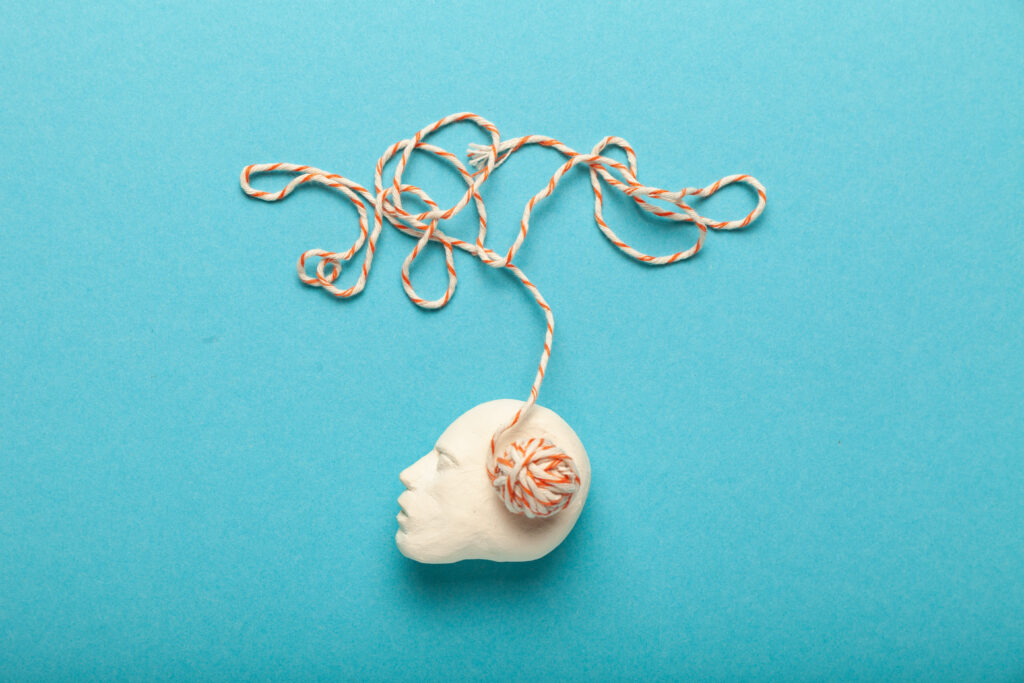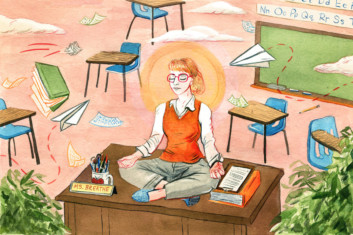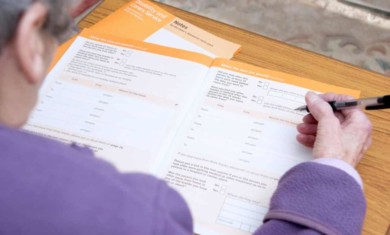For years, Emily struggled to keep her life on track. Her desk was a mess, her mind constantly jumping between tasks, leaving her overwhelmed, anxious, exhausted, and down. She didn’t feel like she was living up to her potential and wanted to do better, but couldn’t figure out why she couldn’t get things done. It wasn’t until her son was diagnosed with ADHD that Emily began to wonder if her lifelong challenges weren’t about a lack of discipline.
ADHD is one of the most misunderstood and chronic conditions that often goes undiagnosed for years. Approximately 3% of adults worldwide live with it in some form. Adults newly diagnosed with ADHD didn’t just develop it. They’ve typically had it their entire life but have likely been able to successfully manage, mask, or compensate for the symptoms with a variety of strategies and systems they may not even realize they’ve been using.
What Is ADHD?
Attention-Deficit/Hyperactivity Disorder (ADHD) is a neurodevelopmental condition that affects how people focus, organize, and regulate their impulses and behaviour. It’s not just a childhood disorder; ADHD persists into adulthood for many, with symptoms evolving over time.
- Predominantly Inattentive Type:
- Often struggles with staying on task, organizing, and completing projects.
- Signs are subtle, such as missing details or losing track of daily tasks.
- Predominantly Hyperactive/Impulsive Type:
- Characterized by high energy, restlessness, and impulsive actions.
- More noticeable in children and can decrease in intensity with age.
- Combined Type:
- A mix of inattentive and hyperactive/impulsive symptoms.
- This is the most common type diagnosed in children.
The Quiet Epidemic: ADHD Underdiagnosis
Throughout the Starling Community, adults diagnosed with ADHD often experience a wave of mixed emotions. Many are relieved to finally understand what has been happening to them, but they also feel a sense of loss and wonder what their life could have been like had they been diagnosed earlier.
Common Myths About ADHD
Despite increased awareness, many misconceptions about ADHD persist. Let’s clear up a few:
- It’s Just a Childhood Disorder: ADHD evolves but rarely disappears. Many adults live with symptoms that impact their work, relationships, and daily life. “Most of the adults with ADHD I see have a high intellectual capacity, and they’ve used that intellect to mask the symptoms of ADHD,” says Dr. Michael Manos. “But then, as life becomes more chaotic in adulthood, their intellect can no longer help them manage the overwhelming details of work, family, and household.”
- It’s an Excuse for Laziness: ADHD isn’t about a lack of effort; it’s a neurodevelopmental disorder that affects executive functioning. However, because people with ADHD often struggle with staying focused and completing tasks, others may incorrectly label them as lazy. Many people with undiagnosed ADHD internalize these negative beliefs, increasing their risk of depression or anxiety. In reality, they often have to work even harder to complete tasks due to feelings of restlessness, difficulty concentrating, or lack of motivation for tasks that aren’t urgent or enjoyable.
- All ADHD Is Hyperactive: Inattentive ADHD, which involves symptoms like forgetfulness and trouble focusing, is more common in adults. This is often why ADHD is missed in women; their symptoms tend to be inattentive, such as daydreaming in childhood.
What ADHD Feels Like
For adults with ADHD, the experience can be both exhausting and isolating. It doesn’t just affect productivity—it spills into every aspect of life. Relationships, self-esteem, and even daily routines can feel like uphill battles.
- “It’s like having 10 browser tabs open at all times. You can’t close them, and they’re all playing music at different volumes.”
- “ADHD feels like having a billion trampolines in your head, each one a different thought, and your brain just keeps bouncing. You want to focus on one thing, but it’s impossible to stay still.”
- “I wish people knew how hard I work just to keep up. ADHD doesn’t make me lazy; it makes things harder so I have to work even harder to keep up.”
- “Just because you can’t see it doesn’t mean it isn’t there. There’s a constant war in my head, and I have to manage my own life around it sometimes.”
- “While I’m staring off into space, it doesn’t mean I’m dumb. It doesn’t mean that I’m not listening to you. Normally it means that you’ve triggered a really interesting thought which my brain can’t help but chase.”
ADHD Management Strategies
Living with ADHD isn’t just about managing symptoms—it’s about creating systems that work for your unique brain. Here are some evidence-based strategies to help, including cognitive behavioural therapy:
1. Build a Routine
- Establish Consistent Habits: Develop morning and evening routines to start and end your day with structure.
- Use Tools: Rely on digital calendars, reminders, and to-do lists to track tasks and appointments. Set up your environment so that it reminds you of things you want or need to do (e.g., workout clothes by the door).
- Schedule Time for Tasks: The hardest part is often getting started. Break large projects into smaller steps, and start with the smallest one. Try to notice when you have the most energy and motivation. Do your hardest, most dreaded, or most put-off tasks then.
2. Minimize Distractions
- Turn Off Notifications: Silence phone alerts and focus on one task at a time.
- Use Noise-Canceling Tools: Headphones or white noise machines can help improve focus.
- Set Boundaries: Learn to say “No,” and block out dedicated “focus time” where interruptions are minimized.
3. Develop Emotional Coping Strategies:
- Mindfulness: Practice techniques like mindfulness to reduce impulsive reactions and manage stress.
- Reframing Thoughts: Instead of thinking, “This will take forever,” try, “I can work on this for 10 minutes and see how far I get.”
- Identify Negative Thought Patterns: Replace self-critical thoughts like “I’m lazy” with more constructive ones, such as “This task feels hard, but I can start small.”
It’s important to get a proper assessment from a licensed mental health care provider for in-depth ADHD evaluation. Taking the first step toward an evaluation is key to better understanding and managing ADHD.




